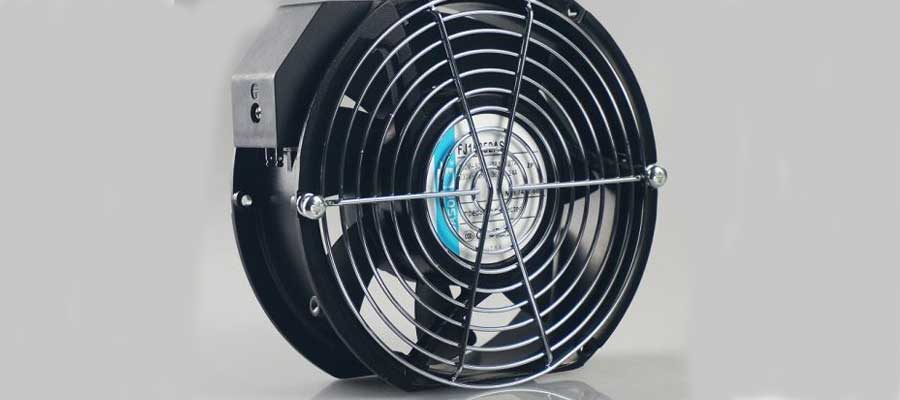Voltronics Power Systems a leading power Electronics Company “Dedicated to providing creating clean, innovative, Energy efficient, reliable and affordable Power Solutions for a better tomorrow.

Sizing & Design
Uninterruptible power supply fans play a crucial role in keeping electronic components such as the inverter and rectifier cool enough to operate safely. If the internal UPS fans don’t work properly, these components run in much higher temperatures, which makes them deteriorate far quicker.
Fans are found throughout the UPS in specific places to maintain effective component cooling. In general, the bigger the UPS, the more (and bigger) fans you’ll find.
UPS fans are mechanical by their nature and subject to wear and tear. Sealed bearings inside fans contain grease which dissipates over time, slowing the fan speed, which in turn creates additional heat and noise. Dust in the atmosphere forces the fans to work harder to keep air flowing, while component switching inside the UPS generates significant amounts of heat too.
Individual fan failures may lead to UPS overheating PCB Damage which can cause the unit to transfer to bypass, leaving the critical load unprotected.
A UPS fan has a typical service life of 4-5years if operating in optimum environmental conditions. However, it is advised to proactively replace fans with new before this end of service life to minimise the risk of serious failure.
As they have a similar service lifespan, many UPS manufacturers recommend replacing the fans and capacitors at the same time. This is commonly known as a UPS overhaul and it minimises the likelihood of multiple fans in the UPS reaching their end of service life at the same time.
The benefit of a full fan replacement at a fixed interval is to avoid multiple fans within the UPS reaching end-of-life at the same time. This could result in a system transfer to bypass at a high ambient temperature and/or from operating at high loads. In extreme cases, the UPS might overheat and shut down if too many fans are not able to operate at rated speed.